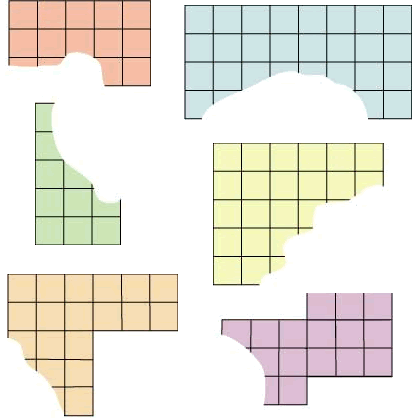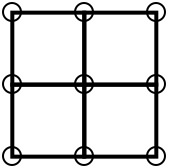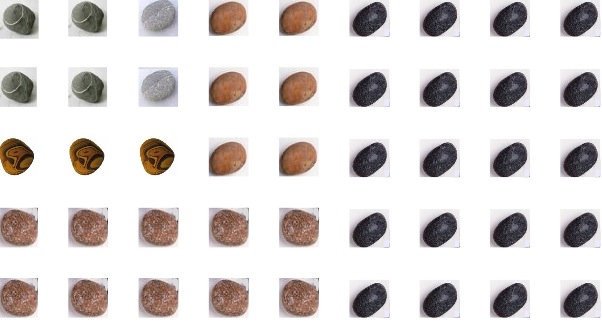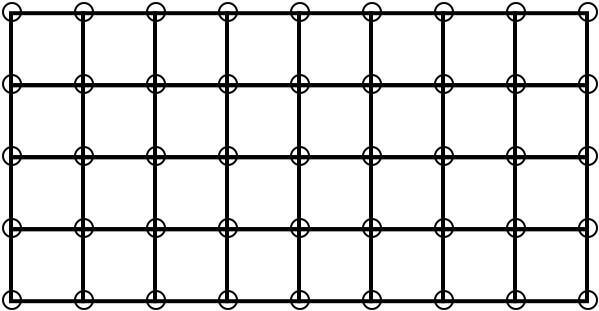Wednesday task 1.
Jason's class cut out rectangles and some shapes which were two rectangles joined together from one centimetre squared paper.
They then counted how many squares the shapes took up.After this they tore a piece out of some of their shapes to make a puzzle for the other groups to do.
Can you work out how many squares there were in these shapes before the bit was torn out? The orange, blue, green and yellow shapes were rectangles. The bottom two shapes, which are pale orange and purple, were each two rectangles joined together.




By adding another


The rule that's developing is that you keep the pebbles that are down already (not moving them to any new positions) and add as FEW pebbles as necessary to DOUBLE the PREVIOUS area, using RECTANGLES ONLY!
So, to continue, we add another three pebbles to get an area of


You could have doubled the area by doing:


But this would not obey the rule that you must add as FEW pebbles as possible each time. So this one is not allowed.
Number 6 would look like this:


So remember:-
The rule is that you keep the pebbles that are down already (not moving them to any new positions) and add as FEW pebbles as necessary to DOUBLE the PREVIOUS area.
Well, now it's time for you to have a go.
"It's easy,'' I hear you say. Well, that's good. But what questions can we ask about the arrangements that we are getting?
We could make a start by saying "Stand back and look at the shapes you are getting. What do you see?'' I guess you may see quite a lot of different things.
It would be good for you to do some more of this pattern. See how far you can go. You may run out of pebbles, paper or whatever you may be using. (Multilink, pegboard, elastic bands with a nail board, etc.)
Well now, what about some questions to explore?
Here are some I've thought of that look interesting:
- How many extra pebbles are added each time? This starts off
2 ,3 ,6 ... - How many are there around the edges? This starts off
4 ,6 ,8 ... - How big is the area? This starts off
1 ,2 ,4 ... - How many are there inside? This starts off
0 ,0 ,1 ,3 ,9 ...
Try to answer these, and any other questions you come up with, and perhaps put them in a kind of table/graph/spreadsheet etc.
Do let me see what you get - I'll be most interested.
Don't forget the all-important question to ask - "I wonder what would happen if I ...?''


No comments:
Post a Comment